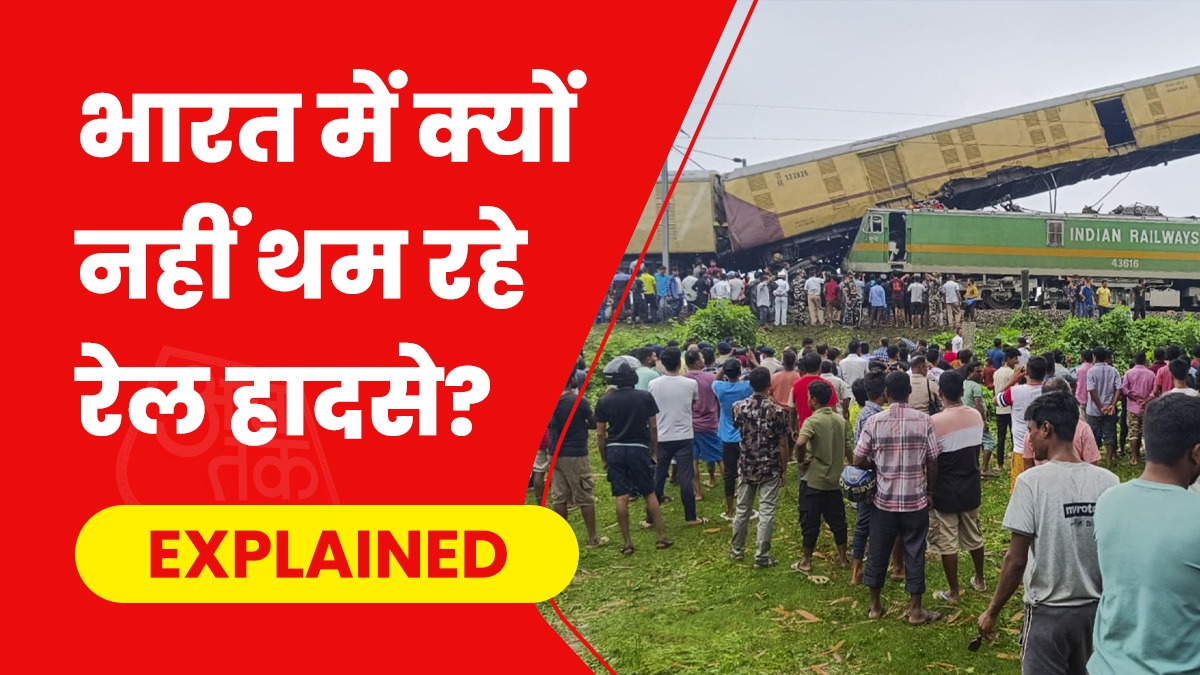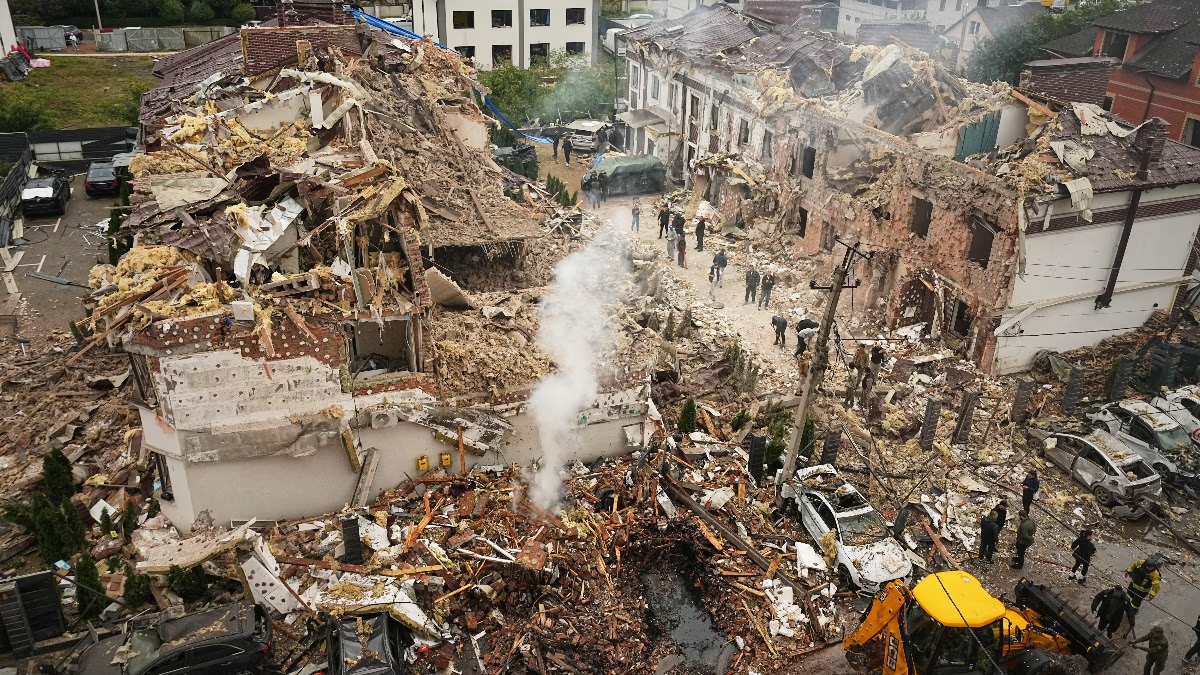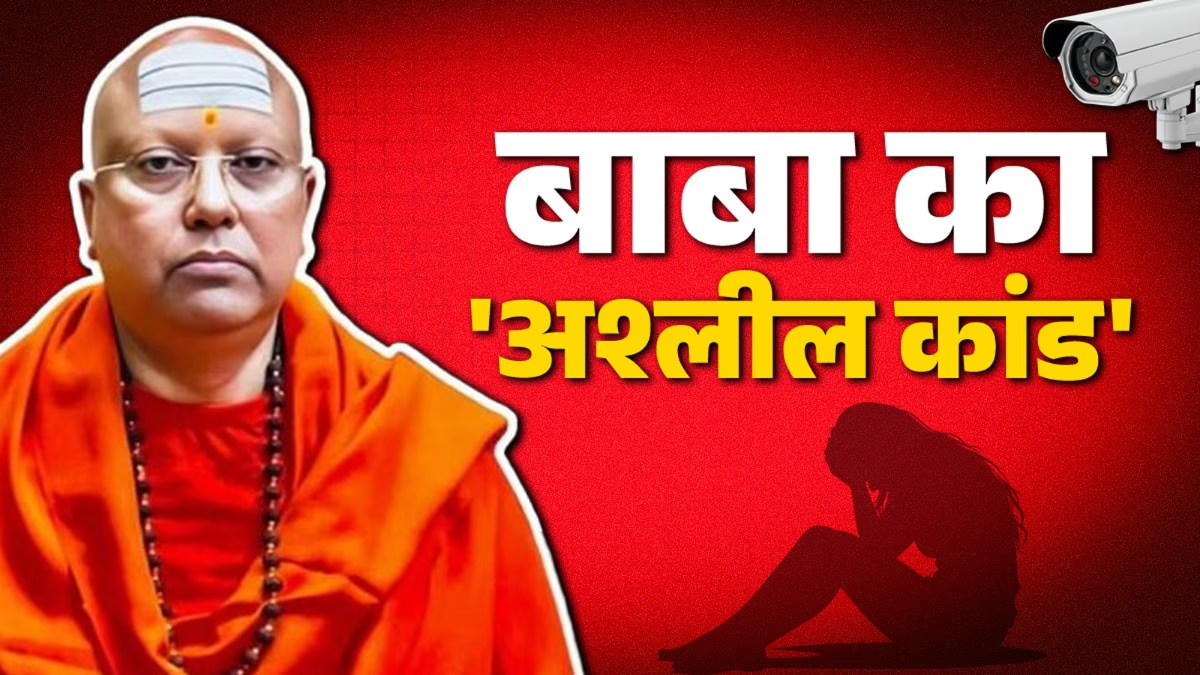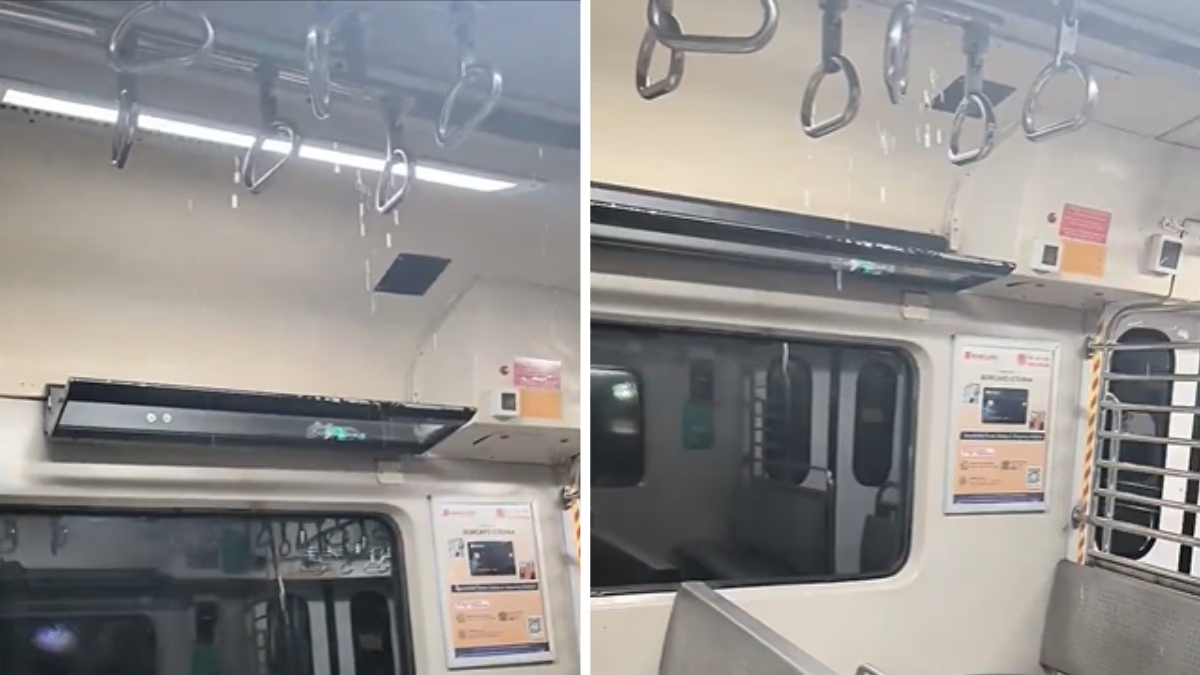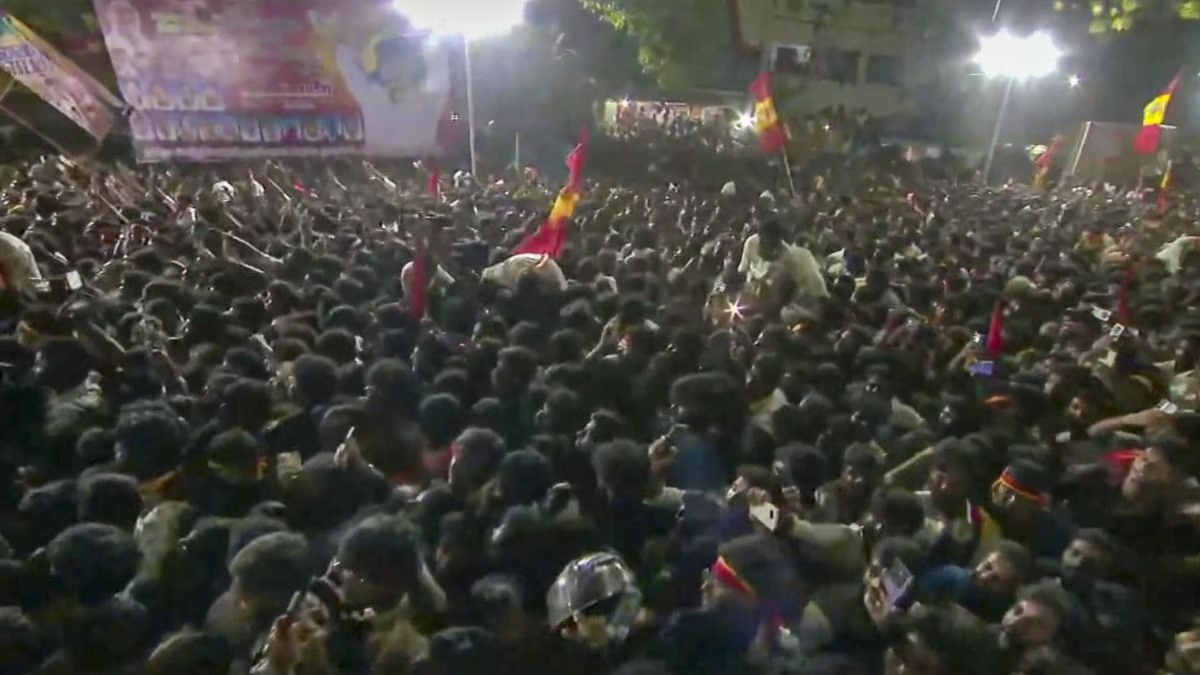A massive rail accident occurred on Monday morning in West Bengal. At New Jalpaiguri, a goods train collided with the Kanchanjunga Express, derailing several carriages. To date, the accident has claimed eight lives, with over 50 people reported injured.
According to reports, the collision took place around 9 am. The Kanchanjunga Express was traveling from Agartala to Sealdah when it was struck from behind by an incoming goods train.
Railway Board Chairperson Jaya Verma Sinha revealed that the goods train driver blatantly ignored the signals, leading to this tragedy that also resulted in the deaths of the driver and the guard of the train.
This marks the biggest rail disaster of the year so far. Previously, a massive incident occurred in June last year at Balasore, Odisha, where the Coromandel Express collided with a stationary goods train, resulting in nearly three hundred deaths.
Annual Accident Statistics:
The government claims that between 2004 and 2014, an average of 171 railway accidents occurred annually. However, from 2014 to 2023, the yearly average decreased to 71.
Statistics suggest a decline in train accidents over decades in India. According to the Railway Yearbook, from 1960-61 to 1970-71, there were 14,769 train accidents over ten years. From 2004-05 to 2014-15, 1,844 accidents occurred. Meanwhile, between 2015-16 and 2021-22, there were 449 train accidents over six years.
During these 62 years from 1960 to 2022, there have been 38,672 railway accidents. This equates to an average of over 600 incidents annually.
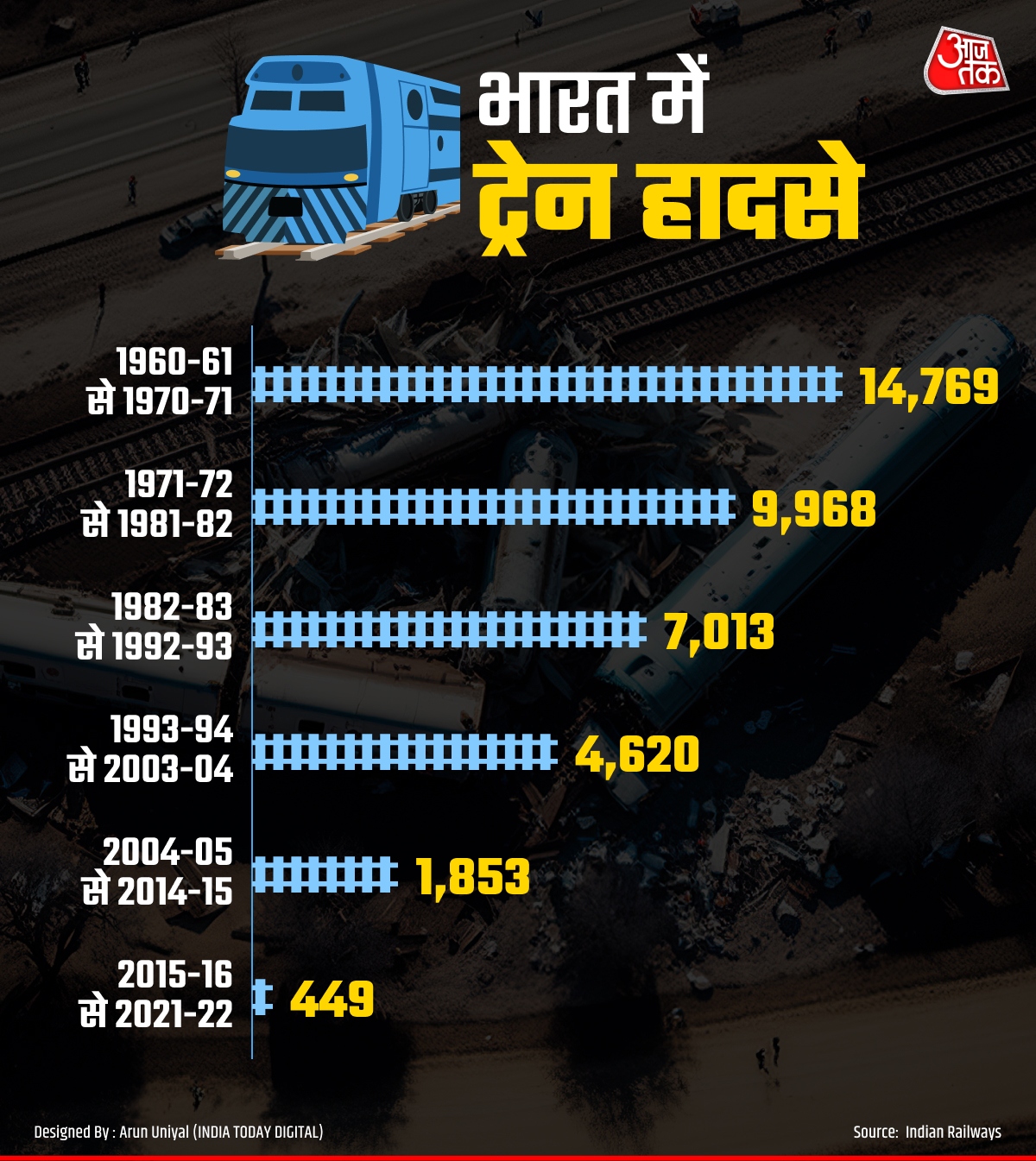
Source: aajtak
According to the Railway Yearbook, the most common type of accident is derailment. Of the 449 incidents between 2015-16 and 2021-22, 322 were due to derailment.
Human Cost in Accidents:
As per the 2021-22 Railway Yearbook, in the five years from 2017-18 to 2021-22, 53 lives were lost, with 390 injuries recorded.
No fatalities from train accidents were recorded in 2019-20 and 2020-21. However, it's important to note that this was during the COVID-19 pandemic when train operations were significantly reduced for several months.

Source: aajtak
In the event of 2021-22, there were 34 train accidents. Twenty of these were due to railway staff error, while four were attributed to equipment failure.
The railway provides compensation to the families of those killed or injured in accidents. Over the last five years, approximately 14 crore rupees have been awarded in compensation, with over 85 lakh rupees distributed in 2021-22 alone.
Regarding compensation amounts, 5 lakhs are provided for death, 2.5 lakhs for serious injury, and 50 thousand for minor injuries.
Government Actions:
The railway plays a crucial role in India, transporting over two and a half crore passengers and over 28 lakh tonnes of goods daily. India boasts the world's fourth-largest rail network, trailing only the United States, Russia, and China.
Thus arises the question: what is the government doing to prevent such disasters? The government has introduced the 'Kavach' system to prevent collisions between trains. ‘Rail Kavach’ is an automatic train protection system that controls the speed of the train through devices installed on the engines and tracks. It applies brakes automatically if a hazard is detected.
It is claimed that trains equipped with the Kavach system will not collide. If two trains are headed towards each other on the same track, Kavach activates and engages the braking system, stopping both trains at a safe distance. So far, 139 locomotive engines are equipped with Kavach.
Similarly, the electronic interlocking system is in place, ensuring the safe movement of trains by integrating with signals, tracks, and points. This system prevents train signal clearance if the line isn't free. It is deemed error-proof and fail-safe. In case of a system failure, signals turn red, and trains come to a halt. As of May 31, 2023, 6,427 stations have implemented the electronic interlocking system.
